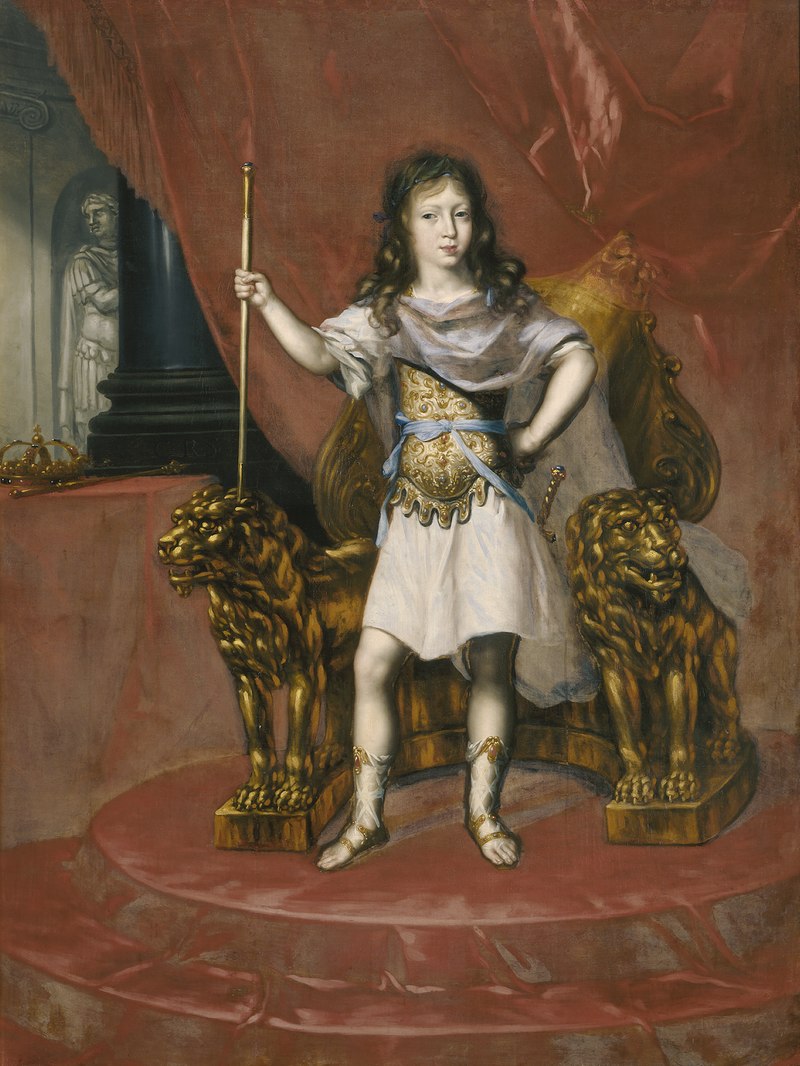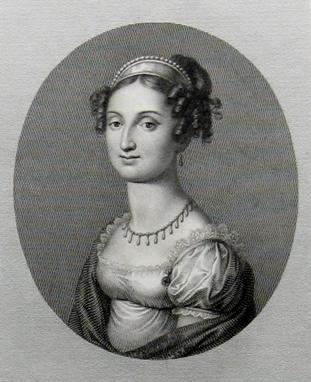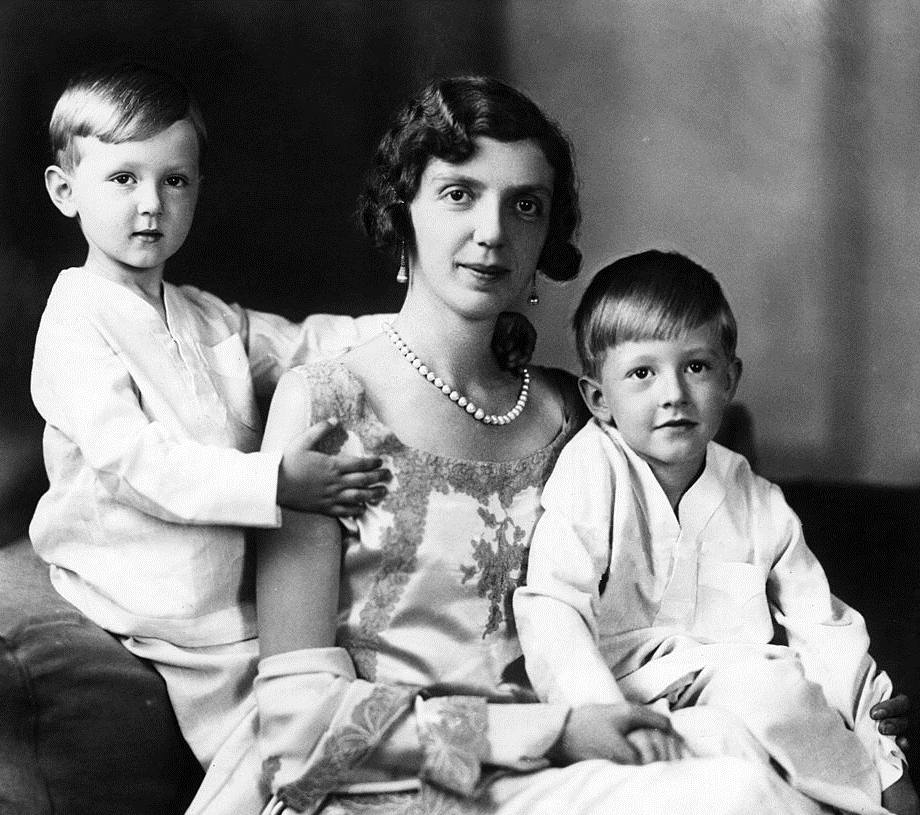by Susan Flantzer
© Unofficial Royalty 2021

Francis Stephen of Lorraine, Duke of Lorraine, Grand Duke of Tuscany, Holy Roman Emperor; Credit – Wikipedia
The Grand Duchy of Tuscany was located in present-day northwest Italy. It existed, with a few interruptions, from 1569 – 1859. Tuscany was ruled by the de Medici family from 1434–1494 and from 1512 until the extinction of its senior branch in 1737. In 1569, Pope Pius V elevated Tuscany to a Grand Duchy and Cosimo I de’ Medici became its first Grand Duke.
In 1737, the House of Habsburg-Lorraine obtained control of the Grand Duchy of Tuscany. François Étienne, Duke of Lorraine exchanged the Duchy of Lorraine for the Grand Duchy of Tuscany. Stanisław I, the father-in-law of King Louis XV of France, had abdicated the throne of Poland in 1736 and now became the Duke of Lorraine.
Except for a period of thirteen years from 1801 – 1814 during the French Revolutionary Wars and Napoleonic Wars, the House of Habsburg-Lorraine retained the Grand Duchy of Tuscany until Tuscany was annexed to the Kingdom of Sardinia in 1860, as a part of the unification of Italy. In 1861, Vittorio Emanuele II, King of Sardinia was proclaimed the first King of the new, united Kingdom of Italy.
Two Grand Dukes of Tuscany were also Holy Roman Emperors: Francesco II Stefano, Grand Duke of Tuscany (reigned 1737 – 1765) also Franz I, Holy Roman Emperor (reigned 1745 – 1765) and Pietro Leopoldo I, Grand Duke of Tuscany (reigned 1765 – 1790) also Leopold II, Holy Roman Emperor (reigned 1790 – 1792).
********************
The Holy Roman Empire was a limited elective monarchy composed of hundreds of kingdoms, principalities, duchies, counties, prince-bishoprics, and Free Imperial Cities in central Europe. The Holy Roman Empire was not really holy since, after Holy Roman Emperor Charles V in 1530, no emperors were crowned by the pope or a bishop. It was not Roman but rather German because it was mainly in the regions of present-day Germany and Austria. It was an empire in name only – the territories it covered were mostly independent each with its own rulers. The Holy Roman Emperor directly ruled over only his family territories, and could not issue decrees and rule autonomously over the Holy Roman Empire. A Holy Roman Emperor was only as strong as his army and alliances, including marriage alliances, made him. His power was severely restricted by the many sovereigns of the constituent monarchies of the Holy Roman Empire. From the 13th century, prince-electors, or electors for short, elected the Holy Roman Emperor from among the sovereigns of the constituent states.
Frequently but not always, it was common practice to elect the deceased Holy Roman Emperor’s heir. The Holy Roman Empire was an elective monarchy. No person had a legal right to the succession simply because he was related to the current Holy Roman Emperor. However, the Holy Roman Emperor could and often did, while still alive, have a relative (usually a son) elected to succeed him after his death. This elected heir apparent used the title King of the Romans.
Learn more at Unofficial Royalty: What was the Holy Roman Empire?
********************
The subject of this article was François III Étienne, Duke of Lorraine (reigned 1729 – 1737), Francesco II Stefano, Grand Duke of Tuscany (reigned 1737 – 1765), and Franz I, Holy Roman Emperor (reigned 1745 – 1765). To avoid confusion, Francis Stephen, his English name will be mostly used in this article.
Born François Étienne of Lorraine on December 8, 1708, at the Ducal Palace of Nancy in the Duchy of Lorraine, now in France, he was the ninth but the eldest surviving of the fourteen children and the fifth but the eldest surviving of the six sons of Leopold, Duke of Lorraine and Princess Élisabeth Charlotte of Orléans. His paternal grandparents were Charles V, Duke of Lorraine and Eleanor of Austria, daughter of Holy Roman Emperor Ferdinand III. His maternal grandparents were Philippe I, Duke of Orléans (son of King Louis XIII of France and brother of King Louis XIV of France) and his second wife Elizabeth Charlotte of the Palatinate, known as Liselotte.

Francis Stephen with his mother, born Princess Élisabeth Charlotte of Orléans Credit – Wikipedia
Francis Stephen had thirteen siblings but only three of his siblings reached adulthood. Four of his siblings died from smallpox, with three of them dying during one week in May 1711. Six additional siblings died in infancy or childhood.
- Léopold, Hereditary Prince of Lorraine (1699 – 1700), died in infancy
- Élisabeth Charlotte of Lorraine (1700 – 1711), died in childhood of smallpox
- Louise Christine of Lorraine (born and died 1701), died in infancy
- Marie Gabrièle Charlotte of Lorraine (1702 – 1711), died in childhood of smallpox
- Louis, Hereditary Prince of Lorraine (1704 – 1711), died in childhood of smallpox
- Joséphine Gabrièle of Lorraine (1705 – 1708), died in childhood
- Gabrièle Louise of Lorraine (1706 – 1710), died in childhood
- Léopold Clément, Hereditary Prince of Lorraine (1707 – 1723), died in his teens of smallpox
- Eléonore of Lorraine (born and died 1710), died in infancy
- Elisabeth Therese of Lorraine (1711 – 1741), married Carlo Emanuele III, King of Sardinia (his third wife), had three children, died due to childbirth complications
- Charles Alexander of Lorraine (1712 – 1780), married Maria Anna of Austria who died giving birth to a stillborn son
- Anne Charlotte of Lorraine (1714 – 1773), unmarried
- Marie Louise of Lorraine (1716 – 1723), died in childhood

Francis Stephen and Maria Theresa at their wedding breakfast; Credit – Wikipedia
Holy Roman Emperor Karl VI favored the family of Leopold, Duke of Lorraine because they were not only related but also because the House of Lorraine had supported the Holy Roman Empire in its recent wars. Karl had planned to have his elder surviving daughter Maria Theresa of Austria marry Francis Stephen’s elder brother Léopold Clément, Hereditary Prince of Lorraine but he died from smallpox at the age of sixteen. Instead, Francis Stephen was chosen as Maria Theresa’s future husband and he was educated in Vienna, Austria with Maria Theresa. On February 12, 1736, in the Augustinian Church in Vienna, Austria, Francis Stephen married Maria Theresa.

Francis Stephen and Maria Theresa with their family; Credit – Wikipedia
Even though Francis Stephen had 16 children with his wife, he was not faithful during his marriage and had many affairs. Eight of the couple’s sixteen children died in childhood and four of the eight died from smallpox:
- Archduchess Maria Elisabeth (1737-1740), died in childhood
- Archduchess Maria Anna (1738-1789), died unmarried, no issue
- Archduchess Maria Carolina (1740-1741), died in childhood
- Holy Roman Emperor Joseph II (1741-1790), married 1) Infanta Isabel of Spain, 2) Princess Marie Josephe of Bavaria, had issue from his first marriage (two daughters, who died young)
- Archduchess Maria Christina (1742-June 1798), married Prince Albert of Saxony, Duke of Teschen, had one stillborn daughter
- Archduchess Maria Elisabeth (1743-1808), died unmarried, no issue
- Archduke Charles Joseph (1745-1761), died of smallpox, no issue
- Archduchess Maria Amalia (1746-1804), married Ferdinand, Duke of Parma, had issue
- Pietro Leopoldo I, Grand Duke of Tuscany, Leopold II, Holy Roman Emperor (1747-1792), married Infanta Maria Luisa of Spain, had issue
- Archduchess Maria Carolina (born and died 1748), died hours after baptism
- Archduchess Maria Johanna (1750-1762), died of smallpox, no issue
- Archduchess Maria Josepha (1751-1767), died of smallpox, no issue
- Archduchess Maria Carolina (1752-1814), married King Ferdinand IV of Naples and Sicily, the future King Ferdinand I of the Two Sicilies after her death, had seventeen children
- Archduke Ferdinand (1754-1806), married Maria Beatrice d’Este, had issue
- Archduchess Maria Antonia (1755-1793), married King Louis XVI of France, became Queen Marie Antoinette of France
- Archduke Maximilian Franz (1756–1801) became Archbishop-Elector of Cologne
Tuscany had been ruled by the House of Medici from 1434–1494 and again from 1512 until the extinction of its senior branch in 1737. The House of Habsburg-Lorraine obtained control of the Grand Duchy of Tuscany. François Étienne, Duke of Lorraine exchanged the Duchy of Lorraine for the Grand Duchy of Tuscany and became Francesco II Stefano, Grand Duke of Tuscany. Stanisław I Leszczyński, the father-in-law of King Louis XV of France, had abdicated the throne of Poland in 1736 and now became the Duke of Lorraine.

Maria Theresa; Credit – Wikipedia
Throughout his reign, Holy Roman Emperor Karl VI expected to have a male heir and never really prepared his daughter Maria Theresa for her future role as sovereign. Upon her father’s death in 1740, Maria Theresa became the sovereign ruler of the Habsburg territories in her own right of Austria, Hungary, Croatia, Bohemia, Transylvania, Mantua, Milan, Lodomeria and Galicia, the Austrian Netherlands, and Parma, and she was the only female to hold the position.

Francis Stephen as Holy Roman Emperor; Credit – Wikipedia
However, Maria Theresa was unable to become the sovereign of the Holy Roman Empire because she was female. The Habsburgs had been elected Holy Roman Emperors since 1438, but in 1742 Karl Albrecht, Duke of Bavaria and Prince-Elector of Bavaria from the Bavarian House of Wittelsbach was elected Holy Roman Emperor Karl VII. He died in 1745 and via a treaty Maria Theresa arranged for her husband Francis Stephen to be elected Holy Roman Emperor as Franz I. Despite the snub, Maria Theresa wielded the real power and Francis Stephen was content to leave the act of reigning to his wife. Francis Stephen had a good business sense and Maria Theresa let him be in charge of financial affairs while she dealt with governing and the complicated politics and diplomacy of the Habsburg dominions.

Francis Stephen lying in state; Credit – Wikipedia
Francis Stephen died suddenly of a stroke or heart attack on August 18, 1765, at the age of 56, in his carriage while returning from the opera in Innsbruck, Austria. His son Joseph succeeded him as Holy Roman Emperor although Maria Theresa continued to wield the real power. His second surviving son Leopold succeeded him as Grand Duke of Tuscany as Pietro Leopoldo I. Later Leopold was elected to succeed his brother Joseph as Holy Roman Emperor reigning as Leopold II. Francis Stephen and Maria Theresa, who survived her husband by fifteen years, are buried together in a magnificent tomb in the Maria Theresa Crypt at the Imperial Crypt at the Capuchin Church in Vienna, Austria.

Tomb of Francis Stephen and Maria Theresa; Photo Credit – © Susan Flantzer
This article is the intellectual property of Unofficial Royalty and is NOT TO BE COPIED, EDITED, OR POSTED IN ANY FORM ON ANOTHER WEBSITE under any circumstances. It is permissible to use a link that directs to Unofficial Royalty.
Grand Duchy of Tuscany Resources at Unofficial Royalty
Works Cited
- De.wikipedia.org. 2021. Franz I. Stephan (HRR) – Wikipedia. [online] Available at: <https://de.wikipedia.org/wiki/Franz_I._Stephan_(HRR)> [Accessed 19 September 2021].
- En.wikipedia.org. 2021. Francis I, Holy Roman Emperor – Wikipedia. [online] Available at: <https://en.wikipedia.org/wiki/Francis_I,_Holy_Roman_Emperor> [Accessed 19 September 2021].
- En.wikipedia.org. 2021. Leopold, Duke of Lorraine – Wikipedia. [online] Available at: <https://en.wikipedia.org/wiki/Leopold,_Duke_of_Lorraine> [Accessed 19 September 2021].
- Flantzer, Susan, 2013. Maria Theresa, Archduchess of Austria, and Queen of Hungary, Croatia, and Bohemia. [online] Unofficial Royalty. Available at: <https://www.unofficialroyalty.com/maria-theresa-archduchess-of-austria-queen-of-hungary-croatia-and-bohemia/> [Accessed 19 September 2021].
- It.wikipedia.org. 2021. Francesco I di Lorena – Wikipedia. [online] Available at: <https://it.wikipedia.org/wiki/Francesco_I_di_Lorena> [Accessed 19 September 2021].


































